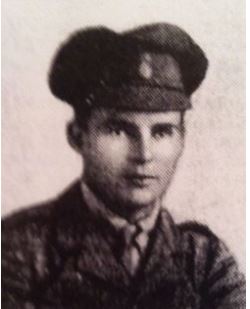1/7 Battalion, Royal Welsh Fusiliers

George Rupert Hailstone was born at Southsea, Hampshire on 20 November 1893. He appears to have been known as Rupert and was one of eight children born to Commander Walter Hailstone RN and his wife Mary Beatrice. The family home was at 21 Lansdowne Terrace, Cheltenham. Rupert attended Glengarth Preparatory School, Bromsgrove School and Selwyn College, Cambridge, where he obtained an honours degree in Natural History.
He had joined the University Officers’ Training Corps in 1912 and on 2 September 1914 was gazetted as a Second Lieutenant into the 1/7th Battalion of the Royal Welsh Fusiliers (RWF). Promotion to Lieutenant followed in July 1915, around the time his battalion set sail for the Dardanelles. The battalion took part in the landings at Suvla Bay in August 1915 and Rupert remained on the Gallipoli Peninsular until the battalion’s evacuation to Egypt in December of that year. 1916 saw the battalion deployed to Palestine and in January 1917 Rupert was promoted to Captain. The 1/7th RWF was part of 158 Brigade, 53 (Welsh) Division and for the greater part of 1917 Rupert acted as Divisional Gas Officer, returning to his battalion in the September.
Having defended the Suez Canal against Ottoman attacks during 1915-16, British and ANZAC forces mounted a series of offensives in the Spring of 1917 to drive them north into Palestine. The following June saw the arrival of Edmund Allenby as GOC and his brief was to drive the Ottoman forces north and to capture Jerusalem. Between the 27 October and 16 November attacks were made on the Ottoman defence line between Gaza and Beersheba. The latter was captured on 31 October and its garrison had withdrawn to defensive positions about 10 miles north of the town. An important position was the high ground of Tel-el-Khuweilfeh, which dominated the surrounding desert and was the site of a good water supply. On 6 November 158 Brigade and the 3rd Camel Brigade mounted a dawn attack, which was partially successful in securing a foothold on the ridge, despite heavy Ottoman counter attacks. This and other actions forced the enemy to abandon the Gaza- Beersheba line and opened the way to Jerusalem, which was captured on 9 December 1917.
The action at Tel-er-Khuweilfeh was costly for the 1/7th RWF, who that day lost 64 other ranks and five officers killed, one of whom was Captain Hailstone. There is some evidence that he was buried near to where he fell but his remains now lie in Beersheba War Cemetery, in what is now Israel. Curiously the notice of his death which appeared in local newspapers states that he was killed on 11 November. He is commemorated in a stained-glass window inside St Stephen’s Church, Cheltenham.
